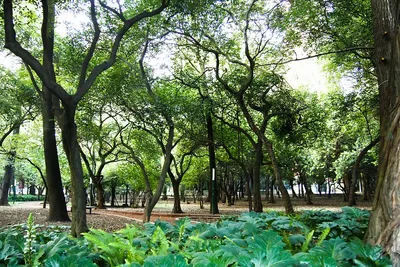
Best Parks in Mexico City That Offer Tranquility and Beauty
Best Parks in Mexico City That Offer Tranquility and Beauty
Mexico city is home to many parks, each offering something unique and special.
Whether you’re looking for a place to relax and unwind, enjoy some outdoor activities, or explore nature, there’s a park for everyone in Mexico City.
Headed by the colossal Chapultepec Forest, the Mexican capital has countless parks of great beauty for the amusement of people and pets.
In this post, we’ll look at some of the top parks in the city and highlight what makes each one special. So, grab a coffee, and let’s dive in!
Top 20 parks in Mexico City
1. Parque Mexico (San Martin Park)
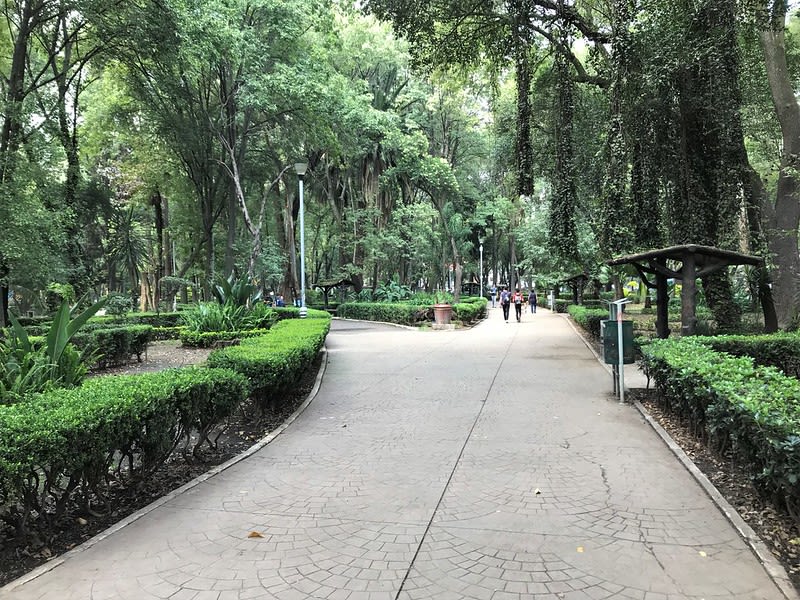
This old capital park, named in honor of General San Martin, was built in 1927 with an Art Deco style to be in harmony with the area’s architecture.
It was built over the Mexican Jockey Club horse track as a meeting and recreation spot in the new urbanized area of the Condesa neighborhood.
It has fountains, water mirrors, waterfalls, and its utility poles are disguised as tree trunks.
In its Charles Lindbergh Theater, open-air cultural activities are held and frequented by adults who exercise and walk their pets.
This is also a good place for children to ride bicycles and play soccer.
Address: Avenida Mexico, Colonia Condesa, Mexico City.
2. Parque España (Spain Park Mexico City)
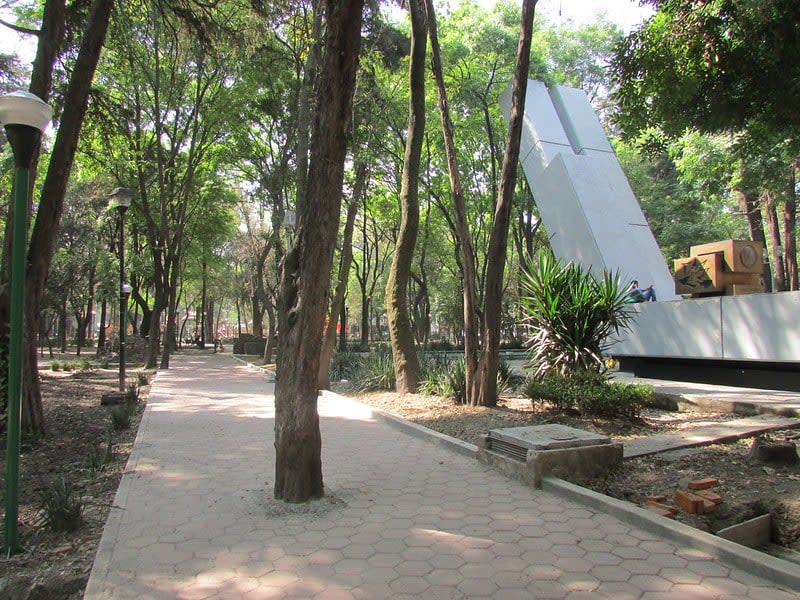
This popular park, bordered by Sonora and Nuevo Leon Avenues, was built on the site that gave access to the old racetrack.
It was designed by the multifaceted Mexico City artist José Luis Cuevas and inaugurated in 1921 amid the centennial celebrations of the conquest of Independence.
The park has an abstract monument dedicated to former President Lázaro Cárdenas.
Beautiful examples of Art Deco and Art Nouveau architecture are found in the neighborhood.
It has trails for walking and strolling with pets, ample green areas, a children’s playground, and exercise equipment.
Address: Colonia Condesa, Mexico City.
3. Alameda Central
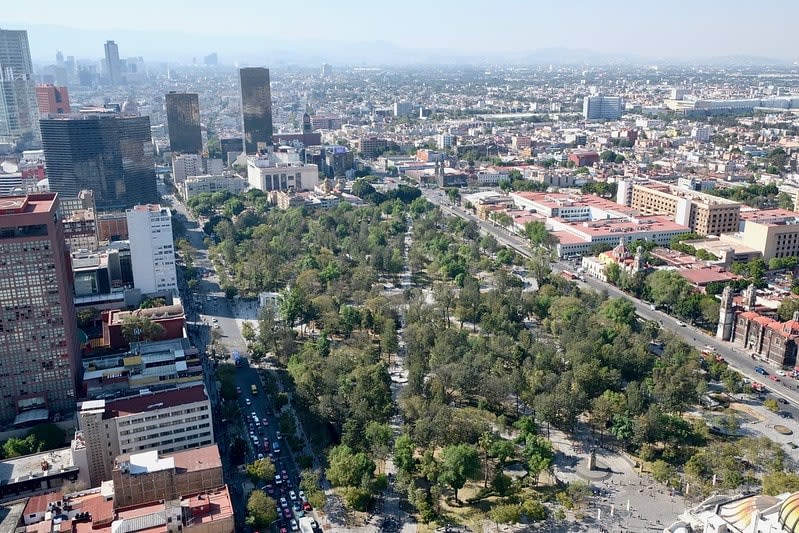
This iconic natural space in the historic center of Mexico City is also the oldest public garden in the Americas.
The Alameda Central became a part of Mexico’s urban landscape in 1592 when it was created in the image of Seville’s Alameda de Hércules, the first public garden in Europe, built in 1574.
After a remodeling project (which included the restoration of the Hemiciclo Juárez and the fountains, the planting of new trees, and other works), the Alameda was reopened in 2012 with better conditions for recreation and safety for public use.
Address: Hidalgo Avenue, Downtown Mexico City.
4. Parque La Bombilla
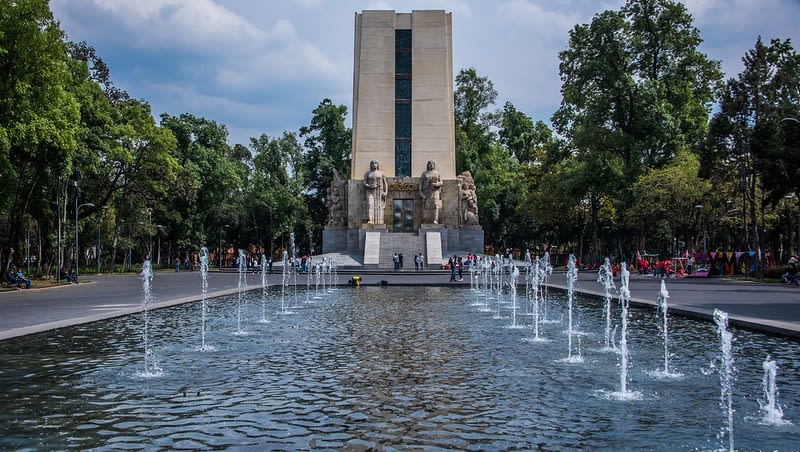
This is one of the parks in Mexico City with the most historical content since it was built on the site of La Bombilla Restaurant, where former President Alvaro Obregón was assassinated in 1928.
In the park, there is a magnificent monument in honor of Obregón, erected in the precise place of the assassination, with a large mirror of water in front of it.
Architect Enrique Aragón Echegaray did the work, and President Lázaro Cárdenas inaugurated the park in 1935.
In the front part of the monument, there are two statues of quarry stone and granite made by the sculptor Ignacio Asúnsolo.
On the other three facades are works by Asúnsolo: The Allegory of Sacrifice, The Allegory of Triumph, and The Allegory of the Northern Region.
The park has a central fountain, several secondary fountains, groves and green areas, pedestrian walkways, and benches.
Address: Avenida de la Paz, Chimalistac, Mexico City.
5. Parque La Tapatía – Chapultepec Forest
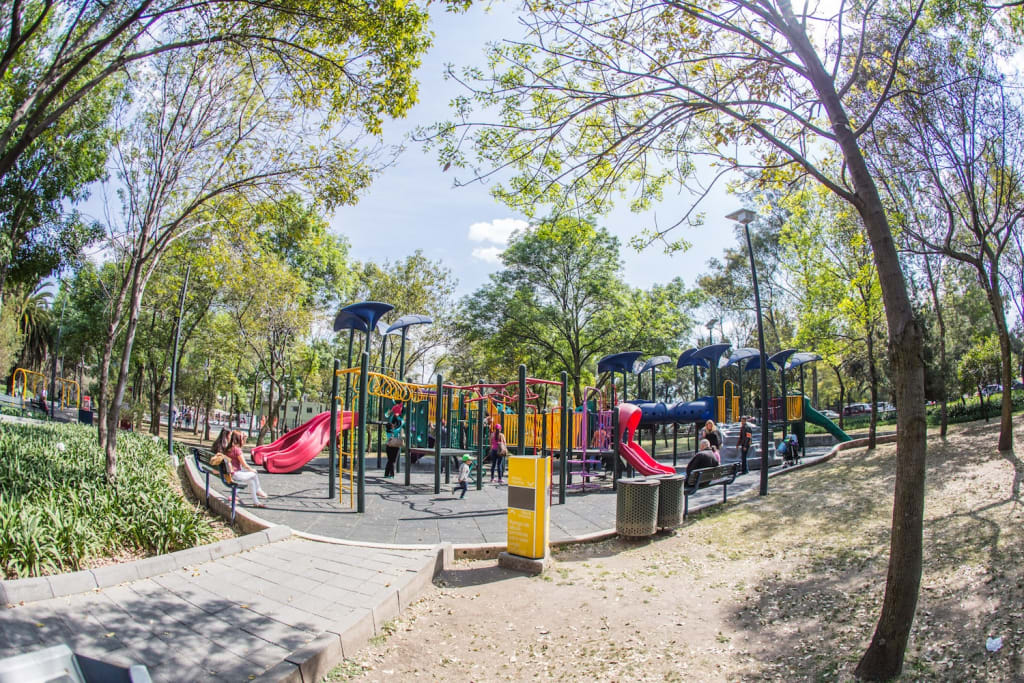
This is one of the favorite children’s parks due to the excellent conditions of its facilities and the ease of access in the cozy natural environment of the Chapultepec Forest.
Its playground includes slides, climbing walls, and large nets.
One of its advantages is that it is divided into ten platforms with attractions designed according to age, including facilities for handicapped children.
Address: Second Section Bosque de Chapultepec, Miguel Hidalgo, Mexico City.
6. San Juan de Aragon Forest
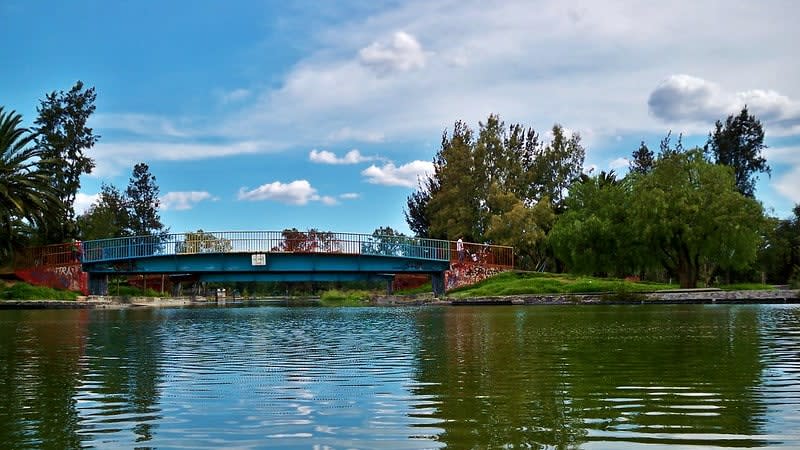
One of the main things to do in this 163-hectare park is to ride its bicycles for up to four people.
It has 113 hectares of green areas and various attractions in the rest of the park.
Wild ducks and other migratory birds arrive at the park every year.
It has a park, gymnasium, children’s center, giant slides, bungee, mechanical games area, open-air theater, skatepark, pony rides area, lake, and spa.
Near the forest is the San Juan de Aragón Zoo, which houses animals from different Mexican and foreign habitats, such as hippopotami, white rhinoceros, and Asian elephants.
Address: Avenida José Loreto Fabela, San Juan de Aragón Zoo, Mexico City.
7. Tezozómoc Park in Mexico City
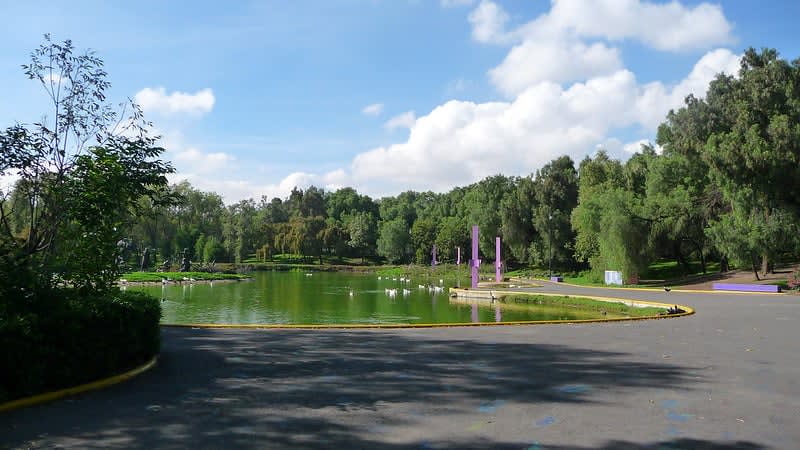
This 28-hectare park, inaugurated in 1982, has a large artificial lake and a set of mounds that scale recreation of the Valley of Mexico in pre-Hispanic times.
The mounds were built with the earth extracted during the excavations of line 6 of the subway.
It has green areas, groves of trees, walkways, a skatepark, bicycle paths, children’s playgrounds, and basketball and tennis courts.
The bike path has high reliefs and, along its stations, illustrates the history of pre-Columbian Mexico.
The lake is a habitat for carp and turtles, and the park is home to squirrels, white herons, spoon-billed herons, geese, and several invertebrate species.
Address: Manuel Salazar, Hacienda del Rosario, Prados del Rosario, Mexico City.
8. San Nicolas Totolapan Ejidal Park
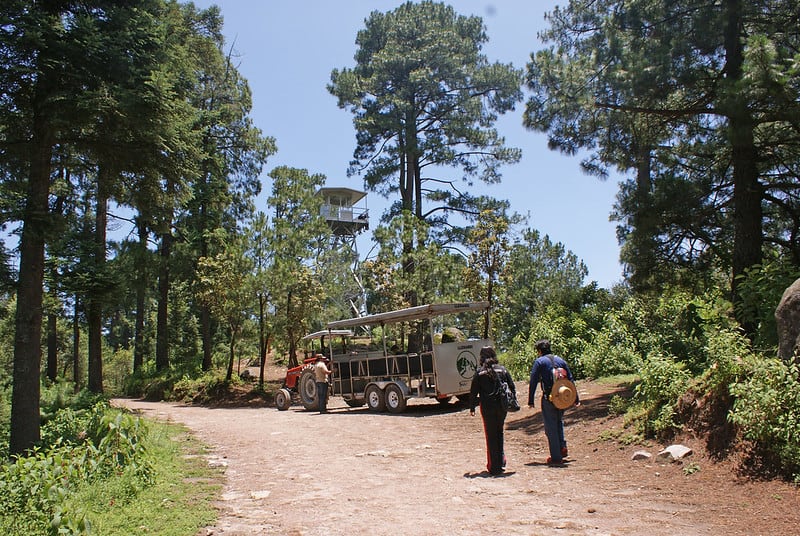
This is an excellent option to spend a day in contact with nature in the city’s south.
Deer stroll through the park’s green areas while visitors walk, observe nature and practice mountain biking and other entertaining activities.
There are several places to have breakfast and lunch at affordable prices and cabins in case you want to spend the night in the woods.
Address: km 11.5, Picacho-Ajusco, Panorámica, Mexico City.
9. El Batán Eco-Park Mexico City
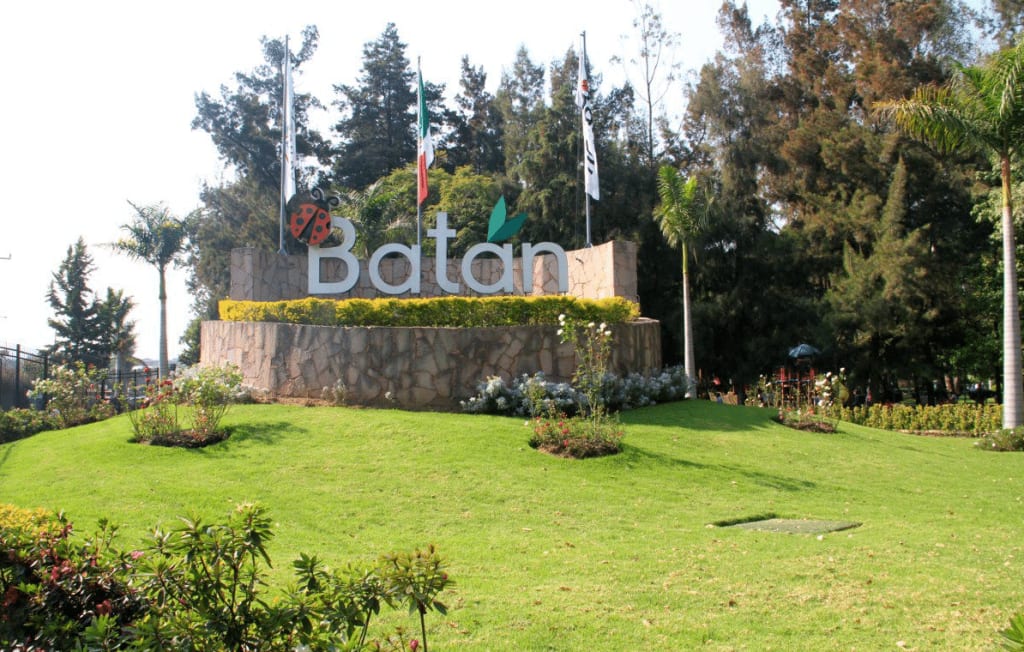
This site houses El Espejo de la Estrella (the star mirror), the last mosaic made by Diego Rivera, and a decorated fountain located in the heart of the park of almost 42,000 m2.
The park has a jogging track, outdoor gymnasium, and children’s playground, including a sandbox, soccer and tennis courts, a mini train, and picnic areas.
It is used for environmental education activities and is home to a Wildlife Management Unit, which cares for macaws, turtles, parakeets, monkeys, and other animals.
The barbecue area is used for family meals and birthday celebrations, and there is also a restaurant.
Address: Avenida San Jerónimo 477, Progreso Tizapán, Mexico City.
10. San Lorenzo Park in Mexico City
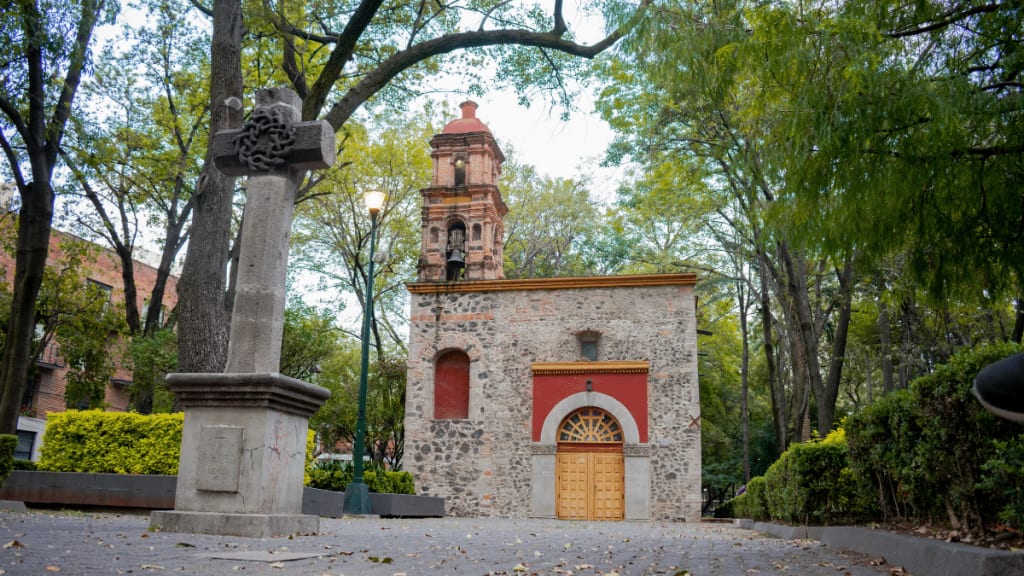
San Lorenzo Park is home to the chapel of San Lorenzo Xochimanca, which dates back to the 16th century and is one of the oldest temples in Mexico City.
The park has a children’s playground, soccer and basketball courts, and rest areas. There are cafes and restaurants in the surrounding area.
The squirrels run through the trees, making the place a peaceful haven to spend quiet time in contact with nature.
Address: San Lorenzo, Tlacoquemecatl del Valle, Mexico City.
11. Alameda de Santa Maria La Ribera

This beautiful Alameda is known for its impressive Moorish-style kiosk, installed in 1910, and a beautiful dome crowned by a bronze eagle, an architectural symbol of the Colonia de Santa Maria La Ribera.
On its paths are four octagonal tiled fountains, and on one of its sides is the Museum of Geology.
This park is used for fairs and exhibitions throughout the year, attracting many people, such as the Cartonería fair during Holy Week.
Address: Colonia Santa María la Ribera, Mexico City.
12. Bosque de Nativitas

The Nativitas forest is next to one of the Xochimilco lake canals.
It has more than 12 hectares of forest where pines, ashes, oaks, and other species grow.
It is a beautiful green “lung” of Mexico City.
Visitors use it to walk, exercise, enjoy barbecues and picnics, and ride horses and ponies. Riding horses are available at the park’s entrance.
Address: Barrio Xaltocan, Calzada Xochiilco Tulyehualcola, Xochimilco, Mexico City.
13. Parque del Amor (lover’s park)
This small, quiet place is ideal for enjoying pleasant company and celebrating love or friendship.
Its trees and green areas break with the predominance of the concrete jungle and help to make the air in this area of Mexico City more “breathable.”
Address: Between La Victoria and Tesoro streets, Colonia Estrella, Mexico City.
14. Cholula Park, Mexico City
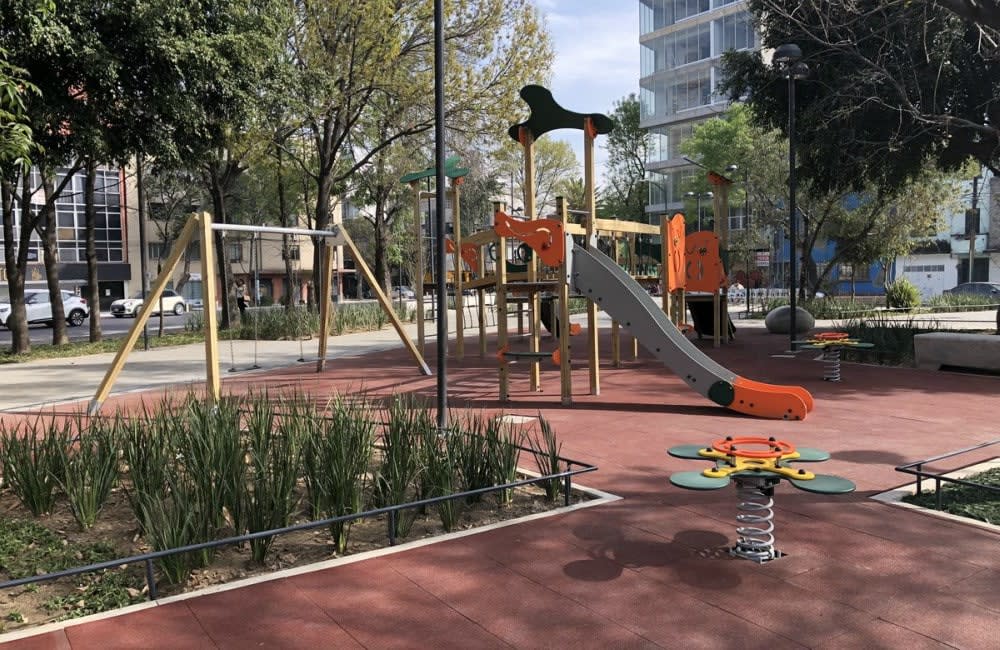
Parque Cholula was reopened in December 2017 after a remodeling and refurbishment process that included pavement renovation, leveling walkways, widening sidewalks, and placement of bollards and lighting.
New trees and ornamental plants were also planted. A beautiful children’s play area was installed with climbing structures and slides.
Address: Cholula 142, Colonia Hipódromo, Mexico City.
15. Parque de la Amistad Mexico – Azerbaiyan
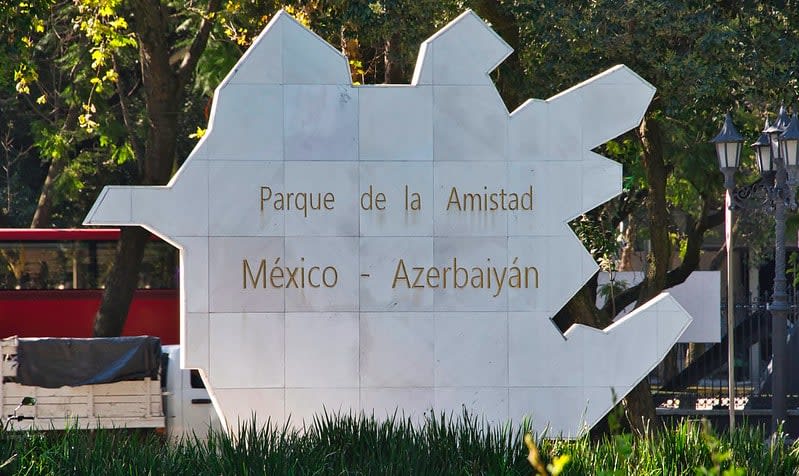
“Friendship Park” is a 1.8-hectare park that was born amid controversy over the placement of a bronze and marble statue of Azerbaijani leader Heydar Aliyev.
Aliyev was president of the now-independent Republic of Azerbaijan from 1993 to 2003, after being the prominent leader during the Soviet era.
The park was built with Azeri funds as a “thank you” from the Caucasian republic to Mexico for being among the first countries to acknowledge its Independence.
It was erected in an area of the First Section of the Chapultepec Forest.
The investment included rehabilitating green areas, forestry sanitation, installing an irrigation system, renovating pavements, and installing a solar energy lighting system.
Address: Paseo de la Reforma, First Section of Chapultepec Forest, Mexico City.
16. Parque Adolfo López Mateos
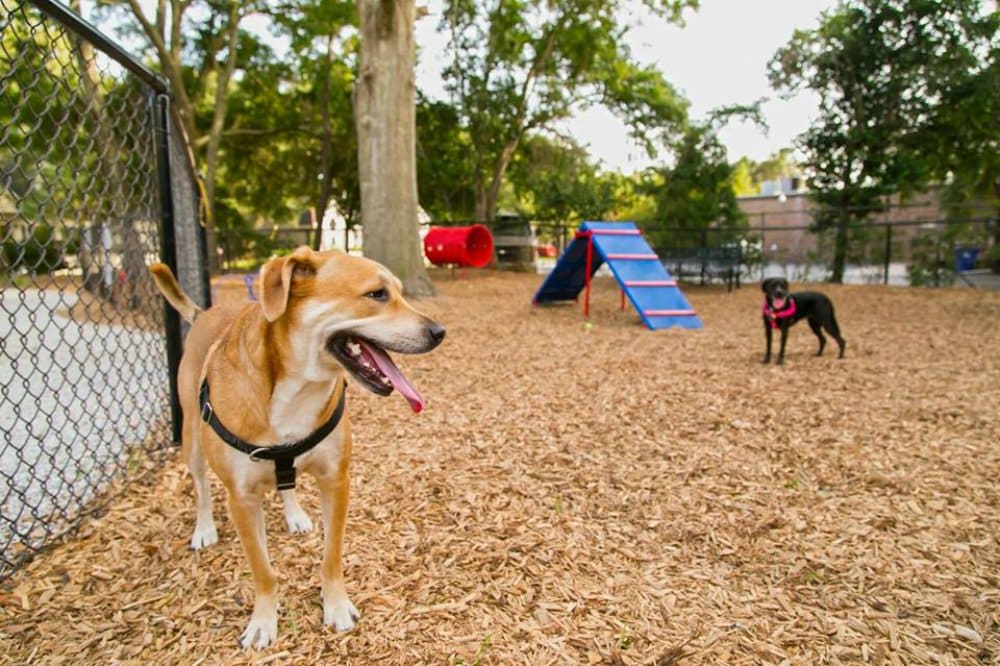
This“canine park” is a pet paradise in Mexico City and is an example of the growing concern for creating public spaces to promote healthy coexistence and quality of life for pets.
It has jumping fences, ramps, tunnels, walkways, slides, drinking fountains, and water and sand pools.
People can wait in the shade of the palapas while their pets enjoy a fun day.
Visitors are only asked to place their friends’ poop in the waste containers to keep the park clean and odor free.
Address: Avenida Somex (de La Orquídea), Tlalnepantla, Mexico City.
17. The Olof Palme Park in Mexico City
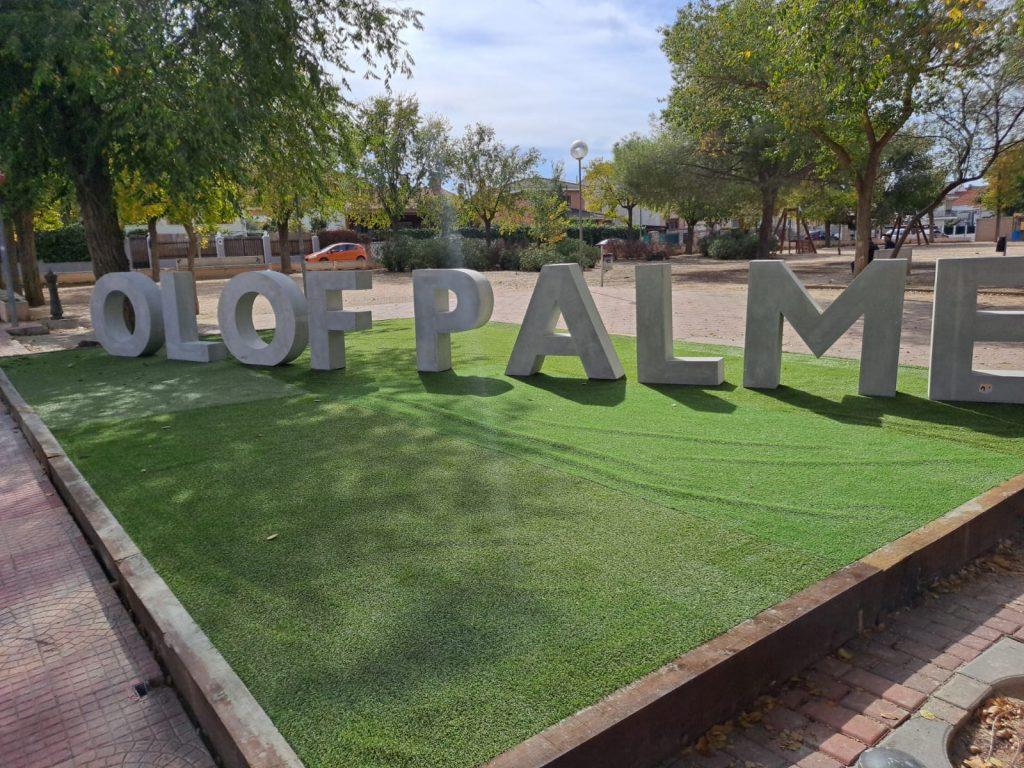
This is a quiet little park with zip lines, a three-level slide, hexagonal swings, benches, walking areas, and a dog playground.
It was named in honor of Olof Palme, the Swedish Prime Minister assassinated on a Stockholm street in 1986.
Address: Río Grijalva Street, Cuauhtémoc, Mexico City.
18. Las Arboledas Park
Among the parks in Mexico City, this is one of the largest in the Benito Juarez District.
Las Arboledas is a few steps from the Zapata subway station and, a few years ago, was rehabilitated into a linear park.
It is well-maintained and has ramps, sidewalks, soccer and basketball courts, walking, jogging, and biking trails, a pet area, and free wi-fi. There are several restaurants nearby.
Address: Heriberto Frías 921, Colonia del Valle, Delegación Benito Juárez, Mexico City.
19. José Refugio Ménez Park
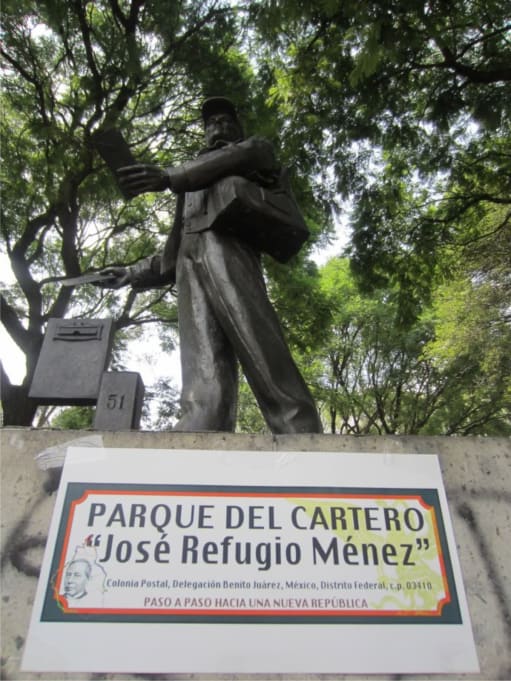
It is also called Parque del Cartero (Postman’s Garden) since José Refugio Ménez was a postman.
On one of its sides is a sculpture dedicated to him.
It was formerly called Odessa Park, after the Ukrainian city on the shores of the Black Sea.
It has a small soccer field, an area reserved for pet games, and a fountain with water jets that reach a good height. At night, the fountain is illuminated.
There is a forum named Xicoténcatl where the ladies practice zumba enthusiastically.
Address: Colonia Miguel Alemán, Delegación Benito Juárez, Mexico City.
20. Frida Kahlo Park in Coyoacan, Mexico City
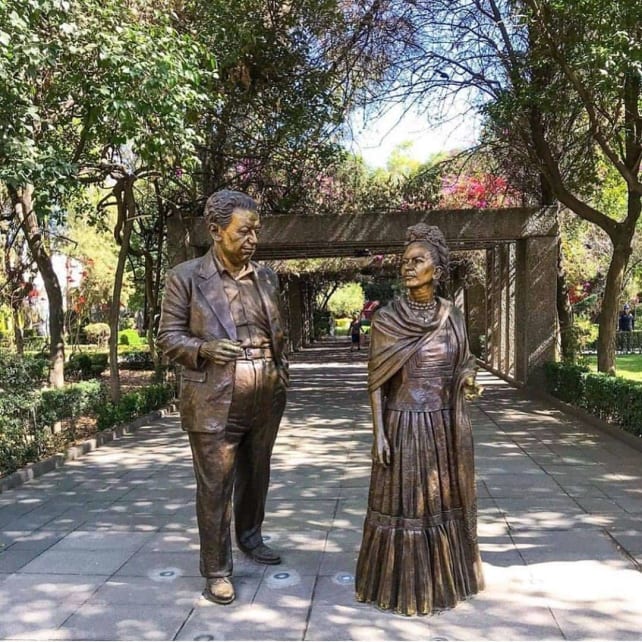
This famous park is dedicated to the iconic Mexican painter born and raised in Coyoacan.
It was inaugurated in 1984, and among its sculptures, there’s a life-size bronze sculpture of Frida seated and dressed in a tehuana costume by artist Gabriel Ponzanelli.
In front of the statue is a fountain with the image of a seated woman hugging her legs.
Before being turned into a park, the property was used for cattle fairs and a textile factory.
Coyoacan residents visit the park to read or spend some quiet time in the shade of its trees and admire its colorful bougainvilleas.
On weekends, cultural, recreational, and sporting events are held in the park. Bicycles, skateboards, and pets are not allowed.
Address: Barrio de la Conchita, Coyoacán, Mexico City.
Chapultepec park and Castle in Mexico City
Welcome to Mexico City’s most iconic park and castle, Chapultepec!
This historic landmark is located in the heart of the city and offers visitors a chance to explore Mexican history, culture, and nature all in one place.
The castle, which sits atop a hill in the park, was once the residence of Mexico’s rulers and is now a museum.
The park is home to several museums, gardens, and lakes, making it a perfect destination for families, history buffs, and nature lovers.
So, whether you’re a first-time visitor or a seasoned traveler, come along and discover the beauty and significance of this beloved Mexican treasure.